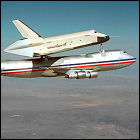 Mated to its Boeing 747 Shuttle Carrier Aircraft, Space Shuttle Enterprise goes airborne for the first time in the first of a series of “captive-inert” test flights. During these flights, there is no crew aboard Enterprise, nor are any of the test shuttle’s systems powered up; the flights are intended to make sure that the combination of the 747 and the Enterprise is capable of being flown safely. Further “captive-inert” flights are carried out over a ten-day period.
Mated to its Boeing 747 Shuttle Carrier Aircraft, Space Shuttle Enterprise goes airborne for the first time in the first of a series of “captive-inert” test flights. During these flights, there is no crew aboard Enterprise, nor are any of the test shuttle’s systems powered up; the flights are intended to make sure that the combination of the 747 and the Enterprise is capable of being flown safely. Further “captive-inert” flights are carried out over a ten-day period.

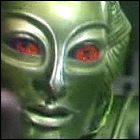 The
The 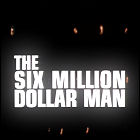 The 76th episode of The Six Million Dollar Man is broadcast on ABC, starring Lee Majors and Richard Anderson. Ian Abercrombie guest stars.
The 76th episode of The Six Million Dollar Man is broadcast on ABC, starring Lee Majors and Richard Anderson. Ian Abercrombie guest stars. UK regional broadcaster HTV premieres the
UK regional broadcaster HTV premieres the 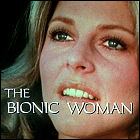 The 31st episode of The Bionic Woman, starring Lindsay Wagner and Richard Anderson, airs on ABC. Robert Loggia (T.H.E. Cat, Mancuso FBI) guest stars.
The 31st episode of The Bionic Woman, starring Lindsay Wagner and Richard Anderson, airs on ABC. Robert Loggia (T.H.E. Cat, Mancuso FBI) guest stars.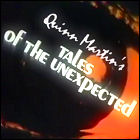 NBC airs the fourth episode of Quinn Martin’s horror/sci-fi anthology Tales Of The Unexpected. (This series is not to be confused with the longer-lived British series of the same name, created by acclaimed author Roald Dahl.) David Birney (Serpico) and William Campbell (Star Trek) guest star.
NBC airs the fourth episode of Quinn Martin’s horror/sci-fi anthology Tales Of The Unexpected. (This series is not to be confused with the longer-lived British series of the same name, created by acclaimed author Roald Dahl.) David Birney (Serpico) and William Campbell (Star Trek) guest star.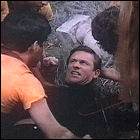 The
The 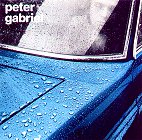 Charisma Records releases
Charisma Records releases 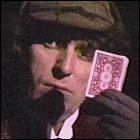 The
The 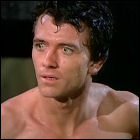 The
The 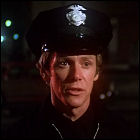 The
The 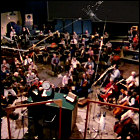 At Anvil Studios in Denham, England, John Williams and the London Symphony Orchestra convene for the first recording session for the Star Wars soundtrack. Over the course of the next 11 days, and with director George Lucas in attendance in the recording booth, all of the music for Lucas’ movie is rehearsed and recorded. Williams and Lucas had been introduced by their mutual friend Steven Spielberg, with whom Williams had worked on 1975’s Jaws (whose score had gone on to win Williams his second Oscar); Lucas’ original plan was to “score” Star Wars entirely with classical pieces. The first scene scored by Williams and the LSO is the rapid-fire chase through the Death Star, culminating in Luke and Princess Leia swinging across a chasm; other pieces recorded on the first day include the death of Obi-Wan Kenobi and the iconic theme music.
At Anvil Studios in Denham, England, John Williams and the London Symphony Orchestra convene for the first recording session for the Star Wars soundtrack. Over the course of the next 11 days, and with director George Lucas in attendance in the recording booth, all of the music for Lucas’ movie is rehearsed and recorded. Williams and Lucas had been introduced by their mutual friend Steven Spielberg, with whom Williams had worked on 1975’s Jaws (whose score had gone on to win Williams his second Oscar); Lucas’ original plan was to “score” Star Wars entirely with classical pieces. The first scene scored by Williams and the LSO is the rapid-fire chase through the Death Star, culminating in Luke and Princess Leia swinging across a chasm; other pieces recorded on the first day include the death of Obi-Wan Kenobi and the iconic theme music.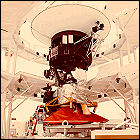 NASA Administrator James Fletcher announces that the ambitious twin Mariner Jupiter/Saturn ’77 space probes, due to be launched later in the year, have been christened with new names: Voyager 1 and Voyager 2. The name change has been initiated by recently-promoted Voyager program manager John Casani, who thinks the spacecraft need a name that’s less of a mouthful (the name “Discoverer” was also considered). For the first time, NASA openly admits that one of the vehicles – Voyager 2 – may continue on to Uranus and Neptune should its Saturn flyby go well in 1981, depending on the spacecraft’s health.
NASA Administrator James Fletcher announces that the ambitious twin Mariner Jupiter/Saturn ’77 space probes, due to be launched later in the year, have been christened with new names: Voyager 1 and Voyager 2. The name change has been initiated by recently-promoted Voyager program manager John Casani, who thinks the spacecraft need a name that’s less of a mouthful (the name “Discoverer” was also considered). For the first time, NASA openly admits that one of the vehicles – Voyager 2 – may continue on to Uranus and Neptune should its Saturn flyby go well in 1981, depending on the spacecraft’s health.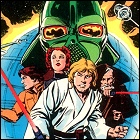 Marvel Comics begins shipping the first issue of its six-issue adaptation of George Lucas’ upcoming film Star Wars, with Lucas reaping the rewards of the licensing arrangement directly since 20th Century Fox has allowed him to keep all merchandising rights to the yet-to-premiere movie. Adapted from the screenplay and edited by Roy Thomas, with artwork by Howard Chaykin, lettering by Jim Novak and colors by Marie Severin, the first six issues offer an interesting visual take on a universe whose visuals were not finished enough for the artist to view ahead of time. After the six issue movie tie-in, Thomas and Chaykin would begin concocting the budding franchise’s first-ever non-film storylines.
Marvel Comics begins shipping the first issue of its six-issue adaptation of George Lucas’ upcoming film Star Wars, with Lucas reaping the rewards of the licensing arrangement directly since 20th Century Fox has allowed him to keep all merchandising rights to the yet-to-premiere movie. Adapted from the screenplay and edited by Roy Thomas, with artwork by Howard Chaykin, lettering by Jim Novak and colors by Marie Severin, the first six issues offer an interesting visual take on a universe whose visuals were not finished enough for the artist to view ahead of time. After the six issue movie tie-in, Thomas and Chaykin would begin concocting the budding franchise’s first-ever non-film storylines.  A team of MIT astronomers, flying in a plane modified to serve as an airborne high-altitude telescope, plans to observe the planet Uranus as it eclipses, or “occults”, a star. But the team observes more occultations than expected both before and after the planet itself passes in front of the star. The inevitable conclusion is that Uranus has rings, made of material too dark to be detected by existing Earthbound telescopes. Further observations are given top priority: NASA’s Voyager 2 space probe, due to lift off later in 1977, may last long enough to reach Uranus, and the newly discovered rings must be taken into account when planning its flyby trajectory.
A team of MIT astronomers, flying in a plane modified to serve as an airborne high-altitude telescope, plans to observe the planet Uranus as it eclipses, or “occults”, a star. But the team observes more occultations than expected both before and after the planet itself passes in front of the star. The inevitable conclusion is that Uranus has rings, made of material too dark to be detected by existing Earthbound telescopes. Further observations are given top priority: NASA’s Voyager 2 space probe, due to lift off later in 1977, may last long enough to reach Uranus, and the newly discovered rings must be taken into account when planning its flyby trajectory.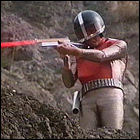 The
The 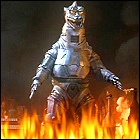 Toho releases
Toho releases 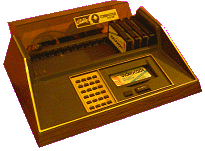 Bally introduces the
Bally introduces the  The
The 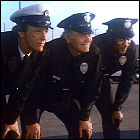 ABC airs both parts of a
ABC airs both parts of a